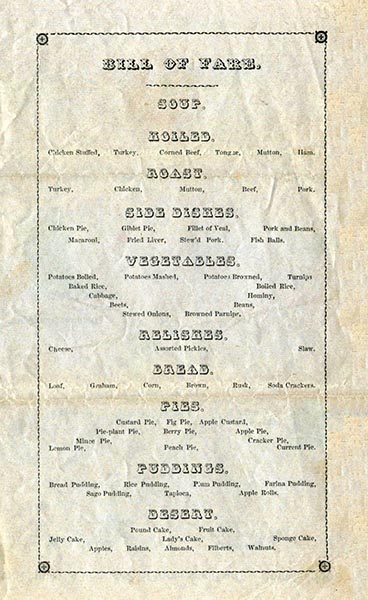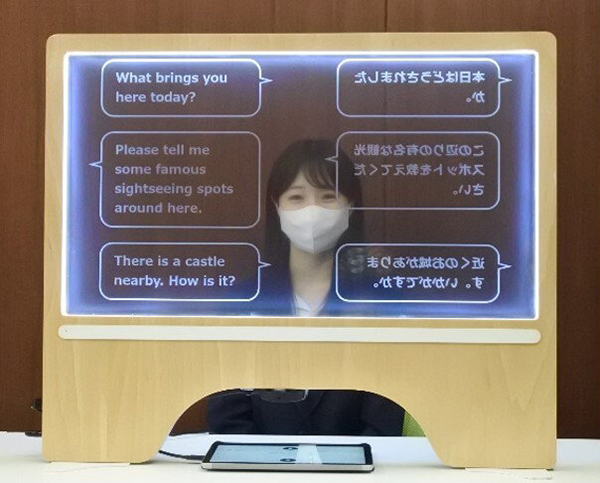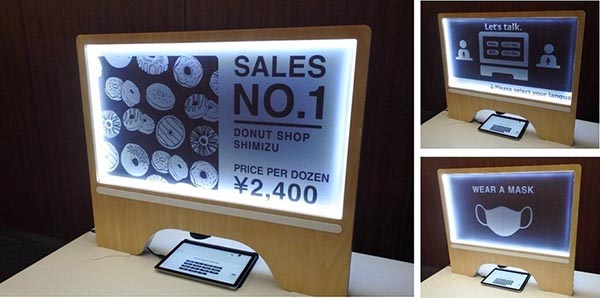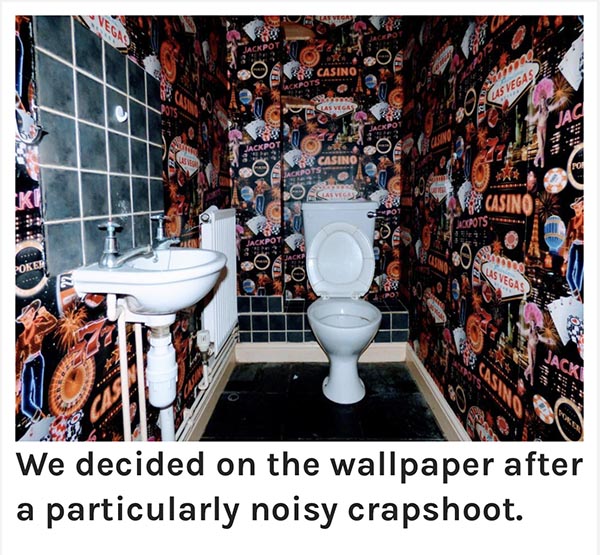Speaking in Tongues
Print magazine raises an interesting point: “Every language lacking proper typefaces becomes muted or even silenced in the worldwide conversation.” They add: “As globalization makes the world feel ever more homogenized, it’s vital to preserve authentic scripts and languages that carry details and nuances of centuries-old cultures.”
Take, for example, Georgian—that’s Georgia the Eastern European country, not the US state. It’s a widely spoken language, and yet there are very few Georgian fonts, and type foundries have very little financial incentive to develop new typefaces for Georgian speakers/writers. Until now.
But this spring, Typotheque ceremoniously launched 30 new Georgian typefaces with a book, symposium, ten-minute documentary, and exhibition in Tbilisi. The Dutch foundry devoted significant effort and resources to collaborating with native speakers, designers, and academics to reproduce the authentic forms of the Georgian characters. The centuries-old writing script is unique, with 33 letterforms that do not belong to any other series of alphabets.
Typotheque founder Peter Bil’ak believes that typeface designers can and should play a vital role in keeping old languages alive and preserving aspects of the cultures in which they have been used.
Bil’ak told Print:
In our lifetime, we will experience a dramatic loss of languages. Typotheque recently published another complex project addressing the languages of South Asia (India, Nepal, Pakistan, Bangladesh, Sri Lanka), which is one of the most linguistically diverse places on earth, but is projected to lose 80% of their languages by the end of the century.
While the global population keeps growing, the number of languages spoken is declining, leading to less diversity and richness across the planet. With the loss of a language, we lose access to the cultural information and heritage it contains. The world becomes poorer.
What’s On the Menu
Henry Voigt is the premier collector of historical American menus, a field where very few are chosen and fewer still are called. He started collecting menus after ~40 years working for DuPont, has a blog called The American Menu, and part of his collection went on display at the Grolier Club in New York. Atlas Obscura has an interview with Voigt, touching on an interesting niche aspect of Americana. His collection begins in the 1840s, when restaurant dining first started to become a thing.
There are menus that predate that, but they’re few and far between, and they come from things like Lafayette’s visit in 1824 and so forth. We weren’t an urban country. We weren’t yet a wealthy country. So it was in the 1840s when the story first started for us.
And it started with table d’hôte menus, at hotels, for the most part. New York City had restaurants, like Delmonico’s and such. But the story really starts with hotels at the very beginning. I start there, and I end yesterday!
As you would expect, items on those menus have changed over the years and some items are no longer found on modern menus—and not for reasons you might expect.
And a lot of that is because the species were wiped out, or loss of habitat wiped out the species.
The big game dinners in the autumn, which were an American tradition at some hotels like the Grand Pacific in Chicago, were national news. They would procure four or five dozen different species of birds and animals of all kinds for those big banquets. That was the abundance of America, and distinguished the American culinary scene from Europe.
He identifies the highlight of his 10,000+ collection as a menu for a women’s restaurant in antebellum New York: Taylor’s Saloon.
The menu is just not like anything you’ve ever seen. It’s 58 pages. It has gutta-percha covers inlaid with mother-of-pearl chromolithographic borders around each page. And on the recto of each leaf, there’s part of the menu, and on the verso of each page, there’s an advertisement.
Has he been to the Cheesecake Factory?

An 1858 menu from the American House hotel in Des Moines, Iowa. Henry Voigt via Atlas Obscura
Paper Cuts
Via Boing Boing, Lucia Biscione is an artist who works primarily with paper, cutting them into intricate shapes and occasionally enhancing them with ink or pencil.

Photos on her Instagram page show her work in progress.
AI-Yi-Yi, Part the Infinity: Ghost Writers
It looks like AI is creating another little corner of hell: counterfeit books. Via Ars Technica:
Upon searching Amazon and Goodreads, author Jane Friedman recently discovered a half-dozen listings of fraudulent books using her name, likely filled with either junk or AI-generated content. Both Amazon and Goodreads resisted removing the faux titles until the author's complaints went viral on social media.
… It’s a rising problem in a world where scammers game Amazon's algorithm to make a quick buck on fraudulent sales. In February, Reuters did a profile on authors using ChatGPT to write e-books, selling them through Amazon. In June, Vice reported on an influx of dozens of AI-generated books full of nonsense that took over Kindle bestseller lists.
Awesome.
Friedman, who reports on the book publishing industry and has authored 10 books, is worried that AI-generated fake books listed in her name will impact her reputation. “A reasonable person might think I control what books are shown on my Goodreads profile, or that I approve them, or at the very least I could have them easily removed. Not so.”
… Friedman isn’t alone in this struggle. On the social media network X (formerly Twitter), author Jane Ward said she recently discovered 29 titles on Goodreads that incorrectly listed her name as the author. Another author, Sarah Rose, tweeted, “People keep telling me they bought my newest book—that has my name on it but I didn’t write—some scammer using the ‘find more by this author’ algorithm. My publisher was unable to make it stop and I sort of gave up.”
Another advantage of physical bookstores…at least for now.
Heartbeat City
The heart is a complex organ, and as such has long resisted attempts to create a 3D-printed version. Until now. Via Discover magazine:
Researchers from the Harvard John A. Paulson School of Engineering and Applied Sciences (SEAS) have announced a 3D printed model of a ventricle that beats with its own inherent rhythm when stimulated with electricity. The trick lies in a new kind of Fiber-Infused Gel (FIG) ink engineered so the fibers inside connect to each other as cardiomyocytes do.
No, graphene was not involved.
“FIG ink is capable of flowing through the printing nozzle but, once the structure is printed, it maintains its 3D shape,” said Suji Choi, a research associate at SEAS, in an interview with Harvard News. “Because of those properties, I found it’s possible to print a ventricle-like structure and other complex 3D shapes without using extra support materials or scaffolds.”
…Choi used the machine to make a thin, cotton-like sheet she broke into tiny segments, using sound waves, and added to the hydro gel ink. Over time, she found the right ratio between ink and fiber segments, which were only about 100 micrometers long. With the right ink, she printed a ventricle with fibers and cardiomyocytes that aligned as they would in a real heart.
When she applied an electrical “pacemaker” current, the ventricle contracted in a coordinated wave.
For many printers, a printing press is the heart of their operation—and now it literally can be.
Found in Translation
Looks like Star Trek’s Universal Translator is not too far from becoming reality, at least in Japan. From Core77:
Japanese company Toppan makes this VoiceBiz UC (Universal Communication) Display. It’s a sort of magic translating window, intended for businesses that accommodate customers speaking different languages.

Toppan started as a print business and, if you read our Newsfeed regularly, you know that they have expanded into all sorts of new and cutting-edge technologies. At any rate, the VoiceBiz UC works thusly:
Person A speaks, and their words appear, in their own language, on the screen like a chat bubble. On the other side of the screen, the query is translated and printed in Person B's language. Rinse and repeat, and in this manner business can be conducted.
When not in use, it also doubles as dynamic digital signage.

Pretty neat.
Surreal Estate
If you have ever been house-hunting, you have no doubt had experiences with real estate photography, ranging from “the reality looks nothing like the photo” to “why would any professional realtor think this photo would help sell a house?” So a fun site to poke around on is Terrible Real Estate Photographs a compendium of images that make you wonder if anyone has ever sold a house. They range from the bizarre:

To the nightmarish:

To our favorite:

Apparently AI can help out with that.
The creator of the site, Andy Donaldson, talks to Hacker News:
KP: Is it important for you that the photos actually originate from real estate marketplaces? If so, how do you verify their origin?
AD: Yes, that’s actually really important, otherwise the blog is just unverifiable user-generated content. If an image is submitted without a link, or no agent’s logo on the image, or I can’t find the source online, I tend not to use it. I’m sent lots of images taken by agents of something funny or shocking they’ve seen in a property that day, but if the image hasn’t been taken for the purposes of marketing the house, I don’t use it.
And if you’re planning on selling a house, learn from others’ failures!
Graphene Has Gone to the Dogs
Was it a good week for graphene news? It’s always a good week for graphene news! Graphene-enhanced armor for service animals. From (who else?) Graphene-Info:
Nova Graphene has announced a pivot in their product development strategy. Originally focused on designing 3D-printed graphene-enhanced ballistic armor for human military and law enforcement personnel, Nova has now fast-tracked the development of similar armor specifically designed for service animals.
That’s “service animals” in the sense of K9 officers, not necessarily seeing-eye dogs.
“We’ve always had plans to develop protective equipment for service animals. They serve on the front lines alongside their human partners, risking their lives for our safety,” said CEO Paul Beasant from Nova Graphene “As with their 2-legged counterparts, we are working towards custom printing this armor from 3D body scans, so the fit, comfort, mobility, and survivability are optimized for the wearer.”
The Perception of Doors
Those of us who have been to non-English-speaking countries know that there are two vitally important foreign words to know in order to not appear like a complete dork in public: “push” and “pull.” However, via Core77, a new door handle design could change all that. German industrial designer and design professor Uli Budde has introduced a set of Push & Pull door handles that are “semantically designed to be clear about the direction the door should be opened.”

And, yes, they are made of porcelain. Says Budde:
Eleven designers, from different regions of Germany, involved through several workshops, which have engaged them for more than a year, have developed new ideas and versatile concepts to use this special material, porcelain, combined with brass, giving life to a unique and varied collection of handles, different in shapes and sizes, finishes and colors. They are produced using a variety of production methods. Kober wants to motivate designers to use and to reinterpret porcelain in modern ways.
Tuba Or Not Tuba, That Is the Question
This certainly would make the Macy’s Thanksgiving Day Parade a bit more entertaining. Via Laughing Squid, a flame-throwing tuba:
Dutch engineer MasterMilo combined a chainsaw with a large brass wind instrument. He then added propane to the bell and lit it up, making an amazing flame-throwing tuba that spews fire for quite a distance.
We can’t wait for the spot-welding clarinet.
Taco Grande
Well, we were all on the edge of our seats over this one:
Taco John’s on July 18 abandoned the United States Patent and Trademark Office registration for its servicemark “Taco Tuesday,” according to a press release. It had held the trademark since 1989 in every state except New Jersey.
Everything’s legal in New Jersey.
The QSR chain is pledging $100 per location in its system to the nonprofit Children of Restaurant Employees (CORE) and is calling on competitors to make a similar donation to the organization. Taco John’s also called out LeBron James to donate his fees from Taco Bell’s recent Taco Tuesday-focused campaign to CORE.
Take it from us, alliteration is vastly overrated.
In other Taco Bell news, a disappointed diner (doh!) is attempting to sue Taco Bell over deceptive advertising. Says Insider:
In a proposed class action lawsuit, Frank Siragusa accused Taco Bell of deceptive trade practices and said their online ads for their Crunchwrap Supreme, Mexican Pizza, and various menu items did not match the products.
So…he’s never seen food advertising before?
Melon Crazy
Here’s a freakish, 2020-esque headline from Food & Wine: “Why You Need to Be on the Lookout for Foaming, Exploding Watermelons This Summer.” The second coming of Gallagher? Nope, hot weather.
According to the Bangor Daily News, bacteria can be introduced into a watermelon while growing on the vine. The bacteria combine with the sugars and yeast inside the melon and start the fermentation process. The foam — which seeps out of the melon through cracks in the rind — is a sign that fermentation is happening.
Hotter temperatures can speed up this process or make it more prevalent, and that’s what’s happening this year. In the United States, watermelons are primarily grown in Arizona, California, Delaware, Florida, and Texas, and all of those states have seen higher-than-average temperatures.
Experts advise caution.
Watermelons that have started to foam should not be eaten, and she even warns against bringing them into your kitchen. Because the fermentation process produces gas, all of that internal pressure can cause the watermelon to explode — and even cutting into a watermelon that has started fermenting could be unsafe. On top of that, foods that have begun to ferment in unsafe or unsanitary conditions can also harbor some nasty bacteria and viruses, including botulism, E.coli, and salmonella.
We feel sure this will be a TikTok phenomenon before long.
This Week in Printing, Publishing, and Media History
August 7
1834: French weaver and inventor, inventor of the Jacquard loom Joseph Marie Jacquard dies (b. 1752).
1926: American puppeteer, voice actor, and singer Stan Freberg, born.
1928: Canadian-American magician and author James Randi born.
1944: IBM dedicates the first program-controlled calculator, the Automatic Sequence Controlled Calculator (known best as the Harvard Mark I).
1959: The Lincoln Memorial design on the U.S. penny goes into circulation. It replaces the “sheaves of wheat” design, and was minted until 2008.
1981: The Washington Star ceases all operations after 128 years of publication.
August 8
1876: Thomas Edison receives a patent for his mimeograph.
1969: At a crosswalk in London, photographer Iain Macmillan takes the photo that becomes the cover image of the Beatles' album Abbey Road, leading to nearly five decades of Beatles fans nearly being run down on that same crosswalk trying to imitate it.

August 9
1776: Italian physicist and chemist Amedeo Avogadro born. (We’ve got his number.)
1854: Henry David Thoreau publishes Walden.
1892: Thomas Edison receives a patent for a two-way telegraph.
1930: Betty Boop makes her cartoon debut in Dizzy Dishes.
1944: The United States Forest Service and the Wartime Advertising Council release posters featuring Smokey Bear for the first time.
1962: German-born Swiss poet, novelist, and painter, Nobel Prize laureate Hermann Hesse dies (b. 1877).
1967: English author and playwright Joe Orton dies (b. 1933).
August 10
1793: The Musée du Louvre is officially opened in Paris, France.
1846: The Smithsonian Institution is chartered by the United States Congress after James Smithson donates $500,000.
1889: American game designer and creator of Monopoly Charles Darrow born.
1948: Smile! Candid Camera makes its television debut after being on radio for a year as Candid Microphone.
August 11
1942: Actress Hedy Lamarr (not Hedley) and composer George Antheil receive a patent for a Frequency-hopping spread spectrum communication system that later became the basis for modern technologies in wireless telephones and Wi-Fi.
1946: American journalist and author Marilyn vos Savant born.
1950: Apple co-founder Steve Wozniak born.
August 12
1865: Joseph Lister, British surgeon and scientist, performs the first antiseptic surgery.
1887: Austrian physicist and Nobel Prize laureate Erwin Schrödinger born.
1949: Scottish-English singer-songwriter, guitarist, and producer Mark Knopfler born.
1960: Echo 1A, NASA’s first successful communications satellite, is launched.
1964: English spy, journalist, and author, creator of James Bond Ian Fleming dies (b. 1908).
1981: The IBM Personal Computer is released.
August 13
1756: English caricaturist and printmaker James Gillray born.
1888: Scottish engineer and inventor of the television, John Logie Baird, born.
1889: William Gray of Hartford, Connecticut is granted United States Patent Number 408,709 for “Coin-controlled apparatus for telephones.”
1899: Director Alfred Hitchcock born.
1946: English novelist, historian, and critic H. G. Wells dies (b. 1866).










Discussion
Join the discussion Sign In or Become a Member, doing so is simple and free